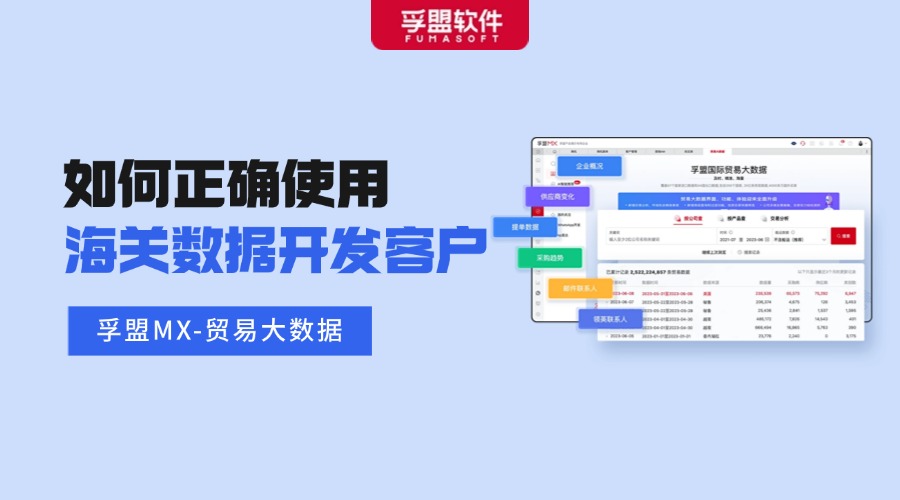 首页
>
新闻资讯
>
外贸干货
>
RCEP生效后外贸纺织服装和轻工行业受益较大
首页
>
新闻资讯
>
外贸干货
>
RCEP生效后外贸纺织服装和轻工行业受益较大
RCEP生效后外贸纺织服装和轻工行业受益较大

当前,中国和日本两国均为贸易大国,而且互为重要贸易伙伴,通过签署《区域全面经济伙伴关系协定》(RCEP),双方首次建立了自由贸易伙伴关系,实现了双边关税减让的历史性突破,将极大地促进两国经贸合作,为未来达成中日韩自贸协定奠定了基础。
随着两国间零关税产品覆盖率大幅提高,以及原产地累积规则的实行,将进一步扩大中日双边贸易规模,为中日经贸关系的发展提供更多机遇。
从中日双边贸易结构来看,中国向日本主要出口产品为电机电气产品、机械产品、纺织服装、玩具、箱包及塑料制品等产品。
外贸纺织服装和轻工行业受益较大
作为首个中日间达成的自贸协定,由于此前中国已和除日本以外的其余13个RCEP成员国均签署了自贸协定,相较而言,RCEP将显著地增进中日经贸合作关系。根据RCEP协定,日本承诺协议生效后立即将中国进口货物商品零关税覆盖率提升到全部税目的57%;协议生效11年内零关税覆盖率提升到75%;协议生效16年内零关税覆盖率提升到75%;协议生效21年内零关税覆盖率最终达到88%。相应地,中国对日本产品的零关税比例也将最终达到86%。
从RCEP框架下日本对中国商品关税减让承诺来看,在中国对日本出口规模最大的电机电气产品和机械制品两类商品中,多数类目当前已经为零关税,RCEP下并无明显的关税下调空间。而外贸纺织服装类商品作为对日本出口的第三大类商品,在RCEP框架下将实现大多数产品逐步下调关税至零关税。对日本出口重点商品中的玩具、箱包、塑料制品等轻工产品也享受较大的关税减让空间。
当前,日本是中国纺织服装行业第三大出口市场(继美国和欧盟之后) 。根据中国海关统计,2021年1—9月,中国对日本出口的纺织原料及纺织制品类商品金额为141.5亿美元,约占该类商品出口总额的6.5%。中国纺织服装行业原先出口至日本大部分产品普遍面临4.7%~10.9%的关税,RCEP生效后,除少部分商品(如口罩等)保持基准税率不变,排除在关税减让承诺之外,对日本主要出口的棉织品、丝织品、合成纤维制品等服装产品关税都将逐年等比例消减,并在第16年实现零关税。
中国对日本出口的玩具和箱包等轻工产品也将享受较大的关税减免优惠。当前,日本是中国第四大玩具类出口市场(继美国、欧盟和英国之后)。根据中国海关统计,2021年1—9月,中国对日本出口的玩具类商品金额为35.7亿美元,约占该类商品出口总额的4.8%。RCEP生效后,中国对日本出口的玩具类商品税率将从当前的普遍3.9%经过11次或16次逐年降税至零关税。
当前,日本是我国第三大箱包、皮革制品出口市场(继美国和欧盟之后)。根据中国海关统计,2021年1—9月,中国对日本出口的箱包、皮革制品金额为18.4亿美元,约占该类商品出口总额的8.5%。RCEP生效后,中国对日本出口较多的箱包类商品也将经过21次逐年降税,从8%降至零关税。
当前,日本是中国第四大塑料制品出口市场(继美国、欧盟和越南之后)。根据中国海关统计,2021年1—9月,中国对日本出口的塑料制品金额为47.2亿美元,约占该类商品出口总额的5.0%。RCEP生效后,中国对日本出口的主要塑料制品税率将经过11次逐年降税,从3.9%降至零关税。
整体而言,日本针对中国纺织服装和轻工产品的关税减让期限普遍较长,短期效应有限,但长期看将对中日双边相关产品贸易合作的稳定发展有积极意义。因此,中国纺织服装和轻工产品有望在未来数年内逐步提高在日本市场的价格竞争力,降低企业出口成本,从而扩大对日本出口,利好中国相关行业企业。
原产地累积规则有利于扩大对日本出口
RCEP生效后,原产地累积规则的实行将有效地降低产品获得协定项下原产地资格的门槛,促进生产要素在区域内自由流动,尤其对中日之间的贸易将产生显著积极影响。RCEP生效后,原来受制于东盟—日本等自贸协定的原产地规则而不得不采取本地生产等措施的产品,将能够直接享受到日本的免关税待遇。
以外贸纺织服装为例,以前很多中国针织企业在东盟国家投资针织服装制造厂,同时必须投资生产针织面料,才能享受日本的免关税待遇。RCEP生效后,从中国进口面料,在东盟加工成服装后,再出口到日本,也可以享受免税待遇。原产地累积规则鼓励使用区域内中间品,有利于通过原产地规则降低相关企业生产成本,进而带动相关中国企业扩大对日本出口。
RCEP生效将给中日经贸合作带来难得的契机,迎来更多发展机遇。随着各RCEP成员国,特别是中国和日本经济恢复带来的有利条件,中国相关企业要积极利用RCEP的优惠关税措施和贸易便利化措施,优化调整产业链布局,加快自身发展步伐。
At present, China and Japan are two countries trade big country, and are important trade partners, signed by the regional comprehensive economic partnership agreement (RCEP), for the first time the two sides established a free trade partnership, realize the historic breakthrough of bilateral tariff concession, will greatly promote the economic and trade cooperation between the two countries, reached for the future China, Japan and South Korea fta laid a foundation.
With the significant increase in the coverage of zero-tariff products between the two countries and the implementation of the accumulative rules of origin, bilateral trade will be further expanded and more opportunities will be provided for the development of china-japan economic and trade relations.
From the perspective of bilateral trade structure, China's main export products to Japan are electrical and electrical products, machinery products, textiles and clothing, toys, bags and plastic products.
Textile and garment industry and light industry benefit more
As the first free trade agreement between China and Japan, RCEP will significantly enhance sino-Japanese economic and trade cooperation since China has already signed free trade agreements with all the other 13 RCEP members except Japan. According to the RCEP agreement, Japan has pledged to increase the zero-tariff coverage rate of Chinese imports to 57% of all tariff items immediately after the RCEP takes effect. Within 11 years after the agreement came into force, the zero-tariff coverage rate was increased to 75%. Within 16 years after the agreement came into force, the zero-tariff coverage rate was increased to 75 percent. The tariff-free coverage of the agreement within 21 years of its entry into force eventually reached 88%. Accordingly, China's zero-tariff rate on Japanese products will eventually reach 86%.
According to Japan's tariff reduction commitment to Chinese goods under the RCEP framework, most of the two categories of electric motors and mechanical products, which are the largest exports from China to Japan, are already zero-tariff, and there is no obvious room for tariff reduction under RCEP. As the third major category of goods exported to Japan, textile and garment products will gradually reduce tariffs to zero for most products under the RCEP framework. Light industrial products such as toys, bags and plastic products, which are key items for export to Japan, also enjoy greater room for tariff reduction.
Currently, Japan is the third largest export market for China's textile and garment industry (after the United States and the European Union). According to the statistics of China Customs, from January to September 2021, the value of Textile raw materials and textile products exported from China to Japan was 14.15 billion US dollars, accounting for about 6.5% of the total export of such goods. China's textile and apparel industry exports to Japan's most original products generally faced with 4.7% ~ 10.9% tariff, RCEP comes into force, in addition to a small number of items (such as face masks, etc.) the benchmark rates unchanged, excluded from the tariff concession promise, on Japan's main export of cotton, silk, synthetic fiber products such as clothing products tariff will be proportionate to reduce year by year, And zero tariffs in year 16.
China's export of toys, bags and other light industrial products to Japan will also enjoy major tariff reduction. Currently, Japan is China's fourth largest toy export market (after the US, EU and UK). According to the statistics of China Customs, from January to September of 2021, China exported toys to Japan worth 3.57 billion US dollars, accounting for about 4.8% of the total export of such goods. After RCEP takes effect, the tariff rate on Toy goods exported from China to Japan will be reduced 11 or 16 times each year to zero from the current general rate of 3.9%.
At present, Japan is China's third largest export market for bags and leather products (after the United States and the European Union). According to the statistics of China Customs, from January to September 2021, China exported suitcases and leather products to Japan worth us $1.84 billion, accounting for about 8.5% of the total export of such goods. After the RCEP takes effect, China will also reduce tariffs on many bags and suitcases exported to Japan from 8% to zero for 21 times each year.
Japan is currently China's fourth largest plastic export market (after the United States, the European Union and Vietnam). According to the statistics of China Customs, from January to September of 2021, the amount of plastic products exported from China to Japan was 4.72 billion US dollars, accounting for about 5.0% of the total export of such goods. After the RCEP takes effect, the tax rate on major plastic products exported from China to Japan will be reduced from 3.9% to zero tariff for 11 times each year.
On the whole, Japan's tariff concessions for China's textile and garment products and light industrial products generally have a long term and limited short-term effect, but in the long run, it will have positive significance for the stable development of bilateral trade cooperation in related products. Therefore, China's textile and garment and light industrial products are expected to gradually improve their price competitiveness in the Japanese market in the next few years, reduce the export cost of enterprises, thus expanding exports to Japan and benefiting Chinese enterprises in related industries.
The cumulative rule of origin is conducive to expanding exports to Japan
After the RCEP comes into force, the implementation of the cumulative rules of origin will effectively lower the threshold for products to obtain the qualification of origin under the AGREEMENT, promote the free flow of production factors in the region, and have a significantly positive impact on trade between China and Japan in particular. After the RCEP takes effect, products that had to take measures such as local production due to the rules of origin of ASEAN-Japan free trade agreements will be able to directly enjoy Japan's tariff-free treatment.
Take textile and garment as an example. In the past, many Chinese knitting enterprises invested in knitting garment factories in ASEAN countries, but at the same time they had to invest in knitting fabrics to enjoy Japan's tariff-free treatment. After RCEP takes effect, fabrics imported from China, processed into garments in ASEAN countries and then exported to Japan will also enjoy duty-free treatment. The cumulative rules of origin encourage the use of intermediate products in the region, which is conducive to reducing production costs of relevant enterprises through rules of origin, thus driving relevant Chinese enterprises to expand exports to Japan.
The RCEP's entry into force will bring rare opportunities and more development opportunities to China-Japan economic and trade cooperation. As RCEP members, especially China and Japan, enjoy favorable economic recovery, relevant Chinese enterprises should make full use of RCEP's preferential tariff measures and trade facilitation measures to optimize and adjust the layout of the industrial chain and speed up their own development.
热门推荐
视频课程精选














